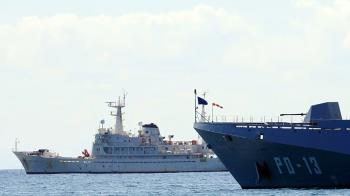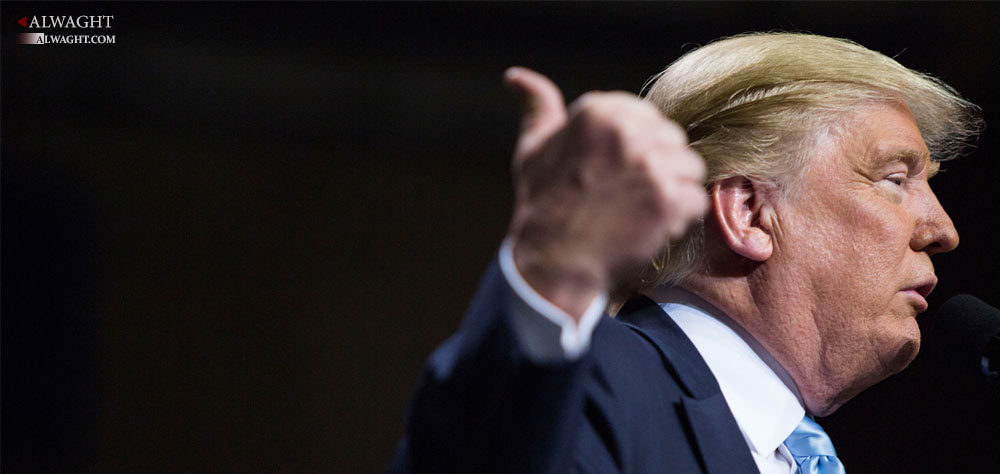Alwaght- since Trump’s swearing-in, one of the issues that received special focus of the media and analysis circles was the US policies in the West Asia region at the time of the new administration.
During the election campaign speeches, Donald Trump declined to present any clear-cut doctrine to follow once he leads the country, and the same unclear status of the Trump's policy continues after over three months of assuming the post of president of the US.
However, the most important thing about Trump’s West Asian strategy after the inauguration on January 20 has been the considerable American military buildup in the region.
In fact, the outstanding issue is that Trump’s cabinet can be labelled “militaristic”, as its decisions and strategies are made by those with military tendencies. This form of the cabinet has been enough for the US to take steps to bolster its military presence in West Asia.
As for proofs, The New York Times in a report has brought in spotlight the American expansion of military deployment to the region, calling it a factor contributing to prolonging the devastating crisis in West Asia region. The American daily says that just two months after Donald Trump took office as president, there appeared signs of US military intervention increase in the region. The renewed military presence, the American daily notes, comes through engagement in a set of complicated battles, with no signs shown by the US administration that it wants to help end the battle.
The New York Times continues that the US now has to deal with a president who pledged to “fight until victory”, and who authorizes complicated military operations overseas. The New York Times also earlier said in an analysis that the US is building up its presence in West Asia while the conflict sends no signals of winding down. The analysis obviously concludes that two things are apparent: American military presence expansion and the prolonged crisis in West Asia region.
To make things clearer about Trump’s West Asian focus, we need to shed light on the West Asia hotspots, where the American military broadening is quite vivid.
Syria
During the election campaign, Syria was the first crisis-hit country Donald Trump said he had plans for to settle its devastating conflict. After inauguration, the president tasked his Secretary of Defense James Mattis to prepare a comprehensive plan within a month to fight the ISIS terrorist group in Syria. Trump, additionally, raised possible plans for establishing safe zones in Syria. But until now, no practical steps have been taken towards materializing the designed plans, and the administration has only stopped short of intensifying arms dispatch to the Syrian Democratic Forces, a bloc including a set of militant groups with the Kurds standing in majority, as well as deploying further US special forces to the Syrian battlefields.
The American military aids to the Kurdish forces only came to frustrate Turkey, an ally of the US and archenemy of the Kurds. Ankara only is witnessing deployment of modern weapons to the Kurds, including anti-tank vehicles and anti-aircraft missile defenses. This was not the end of the Turkish frustration as the US declared intentions to send additional 1,000 troops to Syria to assist the Kurdish forces. All these developments indicate that the American military activism and intervention only increased in Syria as Trump initiated his work at the White House.
IRAQ
Iraq is another Western Asian country attracting Trump’s policy attention. Trump claimed that the US has spent $5 trillion in West Asia, particularly in Iraq, since 2000, and has obtained nothing in return, calling on the US to play a crucial role in the future Iraq. To this end, the American leader designed plans that will allow Washington beef up military meddling in Iraq. There are evidences that this has already started. The American forces deployment and assaults in Mosul have seen a remarkable increase after Trump took office. Furthermore, reports suggest that the US expressed will to station permanent forces in Qayyarah Airfield West in Mosul's south once ISIS is driven out of the capital of Nineveh province. This means US will to increase military forces on the Iraqi soil.
Yemen
Another hotspot where Trump thinks of increasing military activities in is Yemen. During the last month the US carried out several airstrikes across Yemen under the excuse of chasing al-Qaeda militants. According to New York Time the Yemen assaults last month exceeded the whole last year’s air raids in the war-ravaged country. Such attacks notify that Trump needs to heighten Yemen intervention to display his good faith to the Arab allies, particularly Saudi Arabia, which expressed disappointment with his campaign-time remarks to reduce their protection. This need pushes him to spare no efforts to back the forces loyal to Abdrabbuh Mansur Hadi, the resigned president of Yemen and Riyadh's ally, and push against Ansarullah, the resistant Yemeni movement.
Afghanistan
Afghanistan is another target of Trump’s military expansion plans in West Asia. The schemes released by the new White House officials suggest that the US eyes enlarging number of its forces in Afghanistan, moving just against the policy of the former President Barack Obama who worked on cutting down his country’s military personnel serving in Afghanistan.
All in all, the Trump’s policy trends in dealing with the current West Asia developments intend to satisfy the Arab states of the region more than any other side. Turning his back on his election campaign remarks in which he vowed to put a premium on the domestic American issues, Trump now cultivates an interest-centered spirit and seeks to show his good faith to the Arab allies in a bid to allure them into purchasing further American weapons as Washington presses forward with plans for regional military presence boost.



























